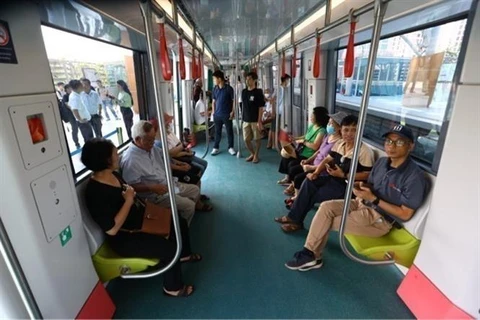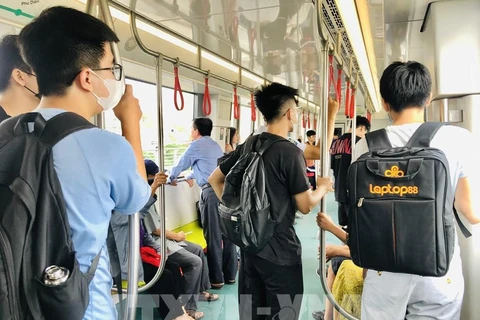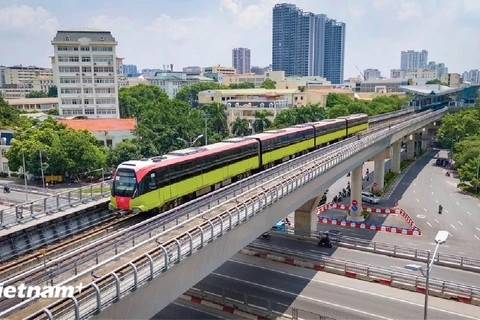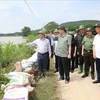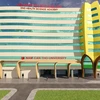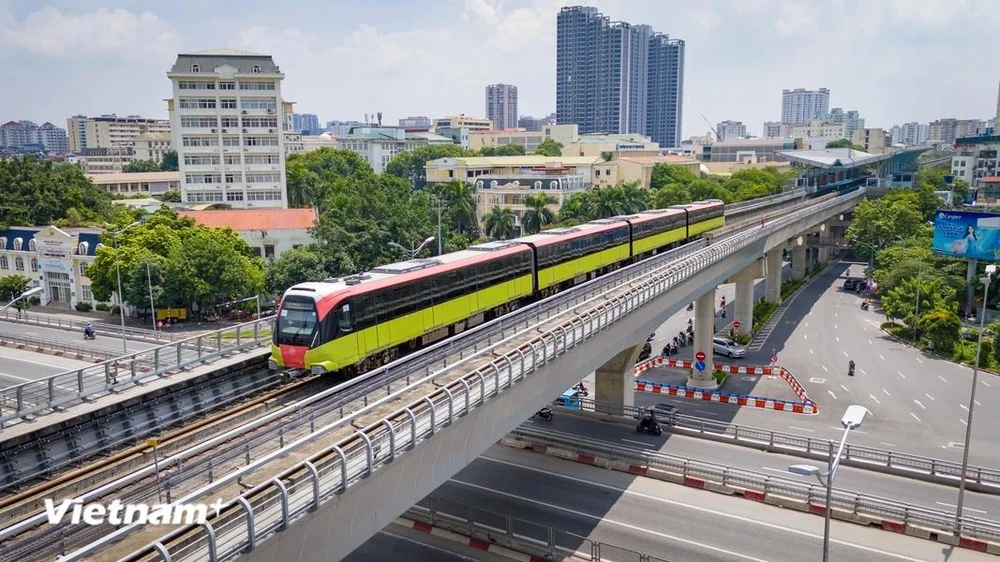
Hanoi (VNA) – The first two first urban railway lines in Hanoi have attracted a large number of passengers, helping modernise the public transportation network and ease traffic congestion, which is an important prerequisite for the city to strongly develop this means of transport in the coming time.
The elevated section of the second urban railway line, Nhon - Hanoi Station, was officially put into use on August 8. It served more than 306,000 passengers on the first five days.
Meanwhile, the first line, Cat Linh - Ha Dong, transports about 10 million passengers each year.
These results are believed to be an important impetus for Hanoi to strongly develop its urban railway system in the time ahead.
The municipal People’s Committee recently submitted a draft master plan on building urban railway to the municipal People’s Council for discussion.
This plan proposes urban railway development be divided into three phases.
From 2024 to 2030, the city will complete constructing 96.8km of railway and make investment preparations for another 301km. More than 14.6 billion USD is needed for this period.
And between 2031 and 2035, 301km of railway will be built at a total cost of over 22.57 billion USD. The local urban railway system is expected to serve 35 - 40% of public transport passengers after 2030.
Meanwhile, Hanoi plans to complete an additional 200.7km during 2036 – 2045, which requires funding of over 18.25 billion USD.
The local administration estimates that by 2035, the city will able to mobilise about 28.56 billion USD from different sources for the work and need around 8.61 billion USD in assistance from the central budget for the 2026 - 2030 and 2031 - 2035 periods.
Vice Chairman of the municipal People’s Committee Ha Minh Hai said one of the most important factors of urban railway development is finance, and the biggest financial resource is the added value from the land traversed by urban railway lines, which could be optimised through transit-oriented development (TOD).
TOD is an urban development model with rapid public transport being the centre that is closely connected with the formation and expansion of the urban railway network.
Le Trung Hieu, Deputy Director of the municipal Department of Planning and Investment, said that with the recent adoption of the revised Law on the Capital, the National Assembly and the Government have given Hanoi a “golden key” to address decades-long difficulties and obstacles hampering the development of transport infrastructure, especially urban railway.
The revised law is one of the critical policy frameworks for developing urban railway and the TOD as Hanoi is granted the right to make decisions about urban railway projects by itself, he noted./.
